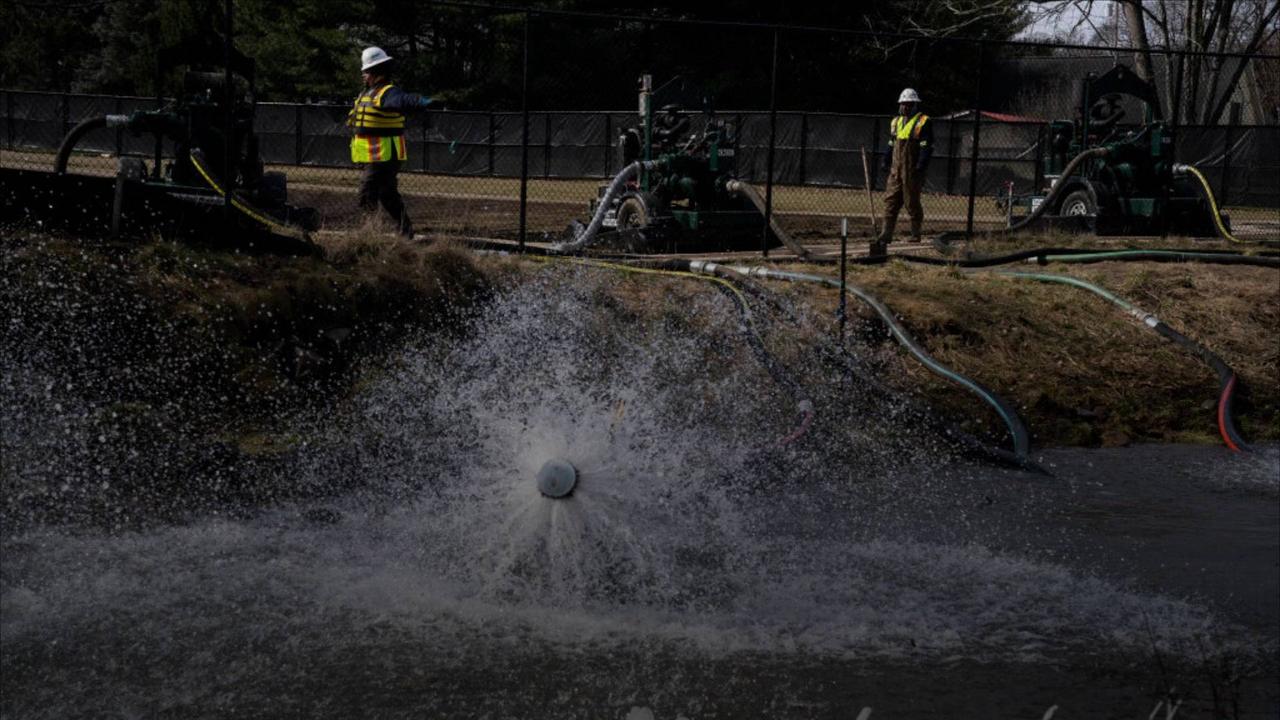Analysis Shows High Levels of Hazardous Chemicals Following East Palestine Derailment

Analysis Shows High Levels of Hazardous Chemicals Following East Palestine Derailment
Analysis Shows High Levels of , Hazardous Chemicals , Following East Palestine Derailment.
NBC reports that a team of scientists discovered high levels of a chemical irritant near the site where a Norfolk Southern train derailed in East Palestine, Ohio, in February.
.
NBC reports that a team of scientists discovered high levels of a chemical irritant near the site where a Norfolk Southern train derailed in East Palestine, Ohio, in February.
.
Following the derailment, a team from Carnegie Mellon and Texas A&M universities searched the area for harmful levels of air pollution.
.
A primary concern was vinyl chloride, which the train operator intentionally burned following the derailment and health experts raised alarms about.
A primary concern was vinyl chloride, which the train operator intentionally burned following the derailment and health experts raised alarms about.
Weeks after the crash, acrolein was detected near the derailment site up to six times higher than levels recorded prior to the incident, according to the study.
Local residents had been told it was safe to return home on February 8 by both local and federal officials.
.
Local residents had been told it was safe to return home on February 8 by both local and federal officials.
.
Researchers warn that long-term exposure to high levels of acrolein could be a health concern.
.
NBC reports that low levels of acrolein exposure can result in slow breathing and a burning sensation in the nose and throat.
.
Long-term exposure in animals results in damage to the lining of the lungs, abnormal lesions and nasal tumors.
.
Researchers were reportedly surprised by the findings, as acrolein was not among the chemicals spilled or burned after the derailment.
Researchers were reportedly surprised by the findings, as acrolein was not among the chemicals spilled or burned after the derailment.
While researchers have yet to determine how acrolein was present at the site, they believe it could have been a byproduct of other spilled chemicals mixing.


![Storms Rip Through U.S-16 Killed, Tornadoes & Floods Leave Trail of Destruction From Texas to Ohio [Video]](https://video.newsserve.net/300/v/20250406/1407275148-Storms-Rip-Through-16-Killed-Tornadoes.jpg)
![Plane Crash in Pennsylvania: Aircraft Nose-Dives into Retirement Home, Destroying Cars, 5 Injured [Video]](https://video.newsserve.net/300/v/20250310/1404650570-Plane-Crash-in-Pennsylvania-Aircraft-Nose-Dives-into.jpg)

![Aimee Lou Wood Says 'SNL' Apologized for "Mean and Unfunny" 'White Lotus' Parody | THR News Video [Video]](https://video.newsserve.net/300/v/20250414/1408073404-Aimee-Lou-Wood-Says-SNL-Apologized-for-Mean.jpg)
!['SNL' Writer Pokes Fun at Morgan Wallen's Abrupt Exit From the Show | THR News Video [Video]](https://video.newsserve.net/300/v/20250331/1406730660-SNL-Writer-Pokes-Fun-at-Morgan-Wallen.jpg)
![Why is Trump “Angry” With Putin? | Threatens 25% Tariffs On Russia Over Ukraine Ceasefire Standoff [Video]](https://video.newsserve.net/300/v/20250331/1406668822-Why-is-Trump-“Angry”-With-Putin-Threatens.jpg)
![Trump Calls CNN And MSNBC 'Illegal' In DOJ Speech | Slams Media Bias | Defends Actions Against Press [Video]](https://video.newsserve.net/300/v/20250315/1405106202-Trump-Calls-CNN-And-MSNBC-Illegal-In-DOJ.jpg)
!['Suits' Star Rick Hoffman Will Return as Louis Litt on 'Suits LA' | THR News Video [Video]](https://video.newsserve.net/300/v/20250306/1404373540-Suits-Star-Rick-Hoffman-Will-Return-as-Louis.jpg)
![Norfolk Southern Says Ongoing Ohio Derailment Cleanup Costs Doubled to $803 Million [Video]](https://video.newsserve.net/300/v/20230727/1355894053-Norfolk-Southern-Says-Ongoing-Ohio-Derailment-Cleanup-Costs.jpg)
![East Palestine controlled burn unnecessary? || Ryan Cristiàn [Video]](https://video.newsserve.net/300/v/20230720/1689864697-East-Palestine-controlled-burn-unnecessary-||-Ryan-Cristiàn.jpg)